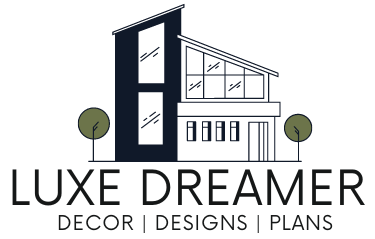The kitchen is such an important part of any home that it’s understandable when couples disagree on which is best for their home.
Whether you’re leaning towards the sleek and tech-savvy allure of a modern kitchen or the cozy, timeless feel of a traditional kitchen, there are compelling reasons for each choice.
Having been through this design dilemma myself, I can offer some insights and practical guidance on the subject.
Modern Kitchen

Modern kitchens are characterized by their clean lines, minimalistic designs, and high-tech gadgets. These kitchens often feature:
- Streamlined Cabinetry: Flat-panel doors with little to no ornamentation.
- Neutral Color Palettes: Shades of white, black, and gray dominate.
- Innovative Technology: Smart appliances, induction cooktops, and advanced lighting solutions.
- Open Layouts: Fewer walls separate the kitchen from the living areas, creating a more spacious feel.
- Industrial Materials: Stainless steel, glass, and concrete are commonly used.
The appeal of a modern kitchen lies in its efficiency and ease of use.
There’s something undeniably attractive about the gleaming surfaces and state-of-the-art gadgets that make cooking and cleaning a breeze.
Traditional Kitchen

On the other hand, traditional kitchens showcase a warm and inviting atmosphere. Key elements often include:
- Ornate Cabinetry: Raised panel doors, often with intricate details and moldings.
- Rich Color Schemes: Warm hues such as cherry, oak, and walnut.
- Soft Lighting: Sconces, chandeliers, and under-cabinet lighting create a cozy ambiance.
- Natural Materials: Stone countertops, wooden floors, and classic backsplashes.
- Decorative Features: Apron-front sinks, vintage fixtures, and plenty of decor accents.
Traditional kitchens evoke a sense of nostalgia and comfort.
They are spaces where family and friends can gather, share meals, and create lasting memories.
Get The Best of Both Worlds
So, what if you can’t agree on one style? The good news is that you don’t have to pick just one. Many homeowners find that blending elements from both styles can create a uniquely personalized space. Here’s how you can achieve a harmonious balance:

1. Combine Cabinet Styles
You might opt for sleek, modern lower cabinets and pair them with more traditional, upper cabinets. This mixture can add visual interest and cater to both aesthetic preferences.
2. Mix Materials
Use natural materials like wood or stone for countertops and floors, but incorporate modern materials like stainless steel or glass in appliances and fixtures. The juxtaposition of these materials can create a balanced look.
3. Blended Color Schemes
A primarily neutral modern color palette can be warmed up with traditional wood tones or colorful backsplashes. This compromise can satisfy the desire for both simplicity and warmth.
Common Questions About Combining Kitchen Styles
Is Mixing Styles a bad idea?
Absolutely not! One of the most exciting trends in interior design is the ability to mix and match different styles to create a space that’s uniquely yours. It’s all about finding a balance that reflects both partners’ tastes.
How Can We Incorporate Latest Gadgets Without Losing Traditional Charm?
Opt for built-in technology that doesn’t dominate the visual aesthetics. Appliances can be integrated into cabinetry or designed to resemble traditional features. For example, a refrigerator can be hidden behind wood paneling that matches your cabinetry.
What Lighting Should We Choose to Blend Both Styles?
Lighting is a crucial element in any kitchen design. Consider combining modern recessed lighting with traditional-style fixtures like pendant lights or chandeliers. This combination can create a layered effect, providing both practical and ambient lighting.
Practical Tips
Transitioning into practical advice, here’s a checklist to help you navigate this design journey:
- Prioritize Functionality: Regardless of style, a kitchen must be functional. Ensure there’s ample storage, worktop space, and efficient workflow.
- Set a Budget: Mixing styles can sometimes get costly. Decide early on where you’re willing to splurge (like appliances) and where you can save (like fixtures).
- Start with a Focal Point: Choose one element that will be the star of your kitchen—be it a marble island, a vintage stove, or a modern backsplash—and design around it.
- Consult a Professional: Sometimes, merging styles can be challenging. A kitchen designer can help bridge the gap, offering creative solutions that may not have crossed your mind.
Final Thoughts
At the end of the day, your kitchen should be a space that brings joy, whether it’s through high-tech gadgets that make your life easier or the nostalgic charm of traditional design elements. It’s about blending both partners’ visions into a cohesive and beautiful space.
I’m confident that with open communication and a bit of creative compromise, you can design a kitchen that perfectly marries the sleek modernity your partner desires with the warm traditional charm you adore.
